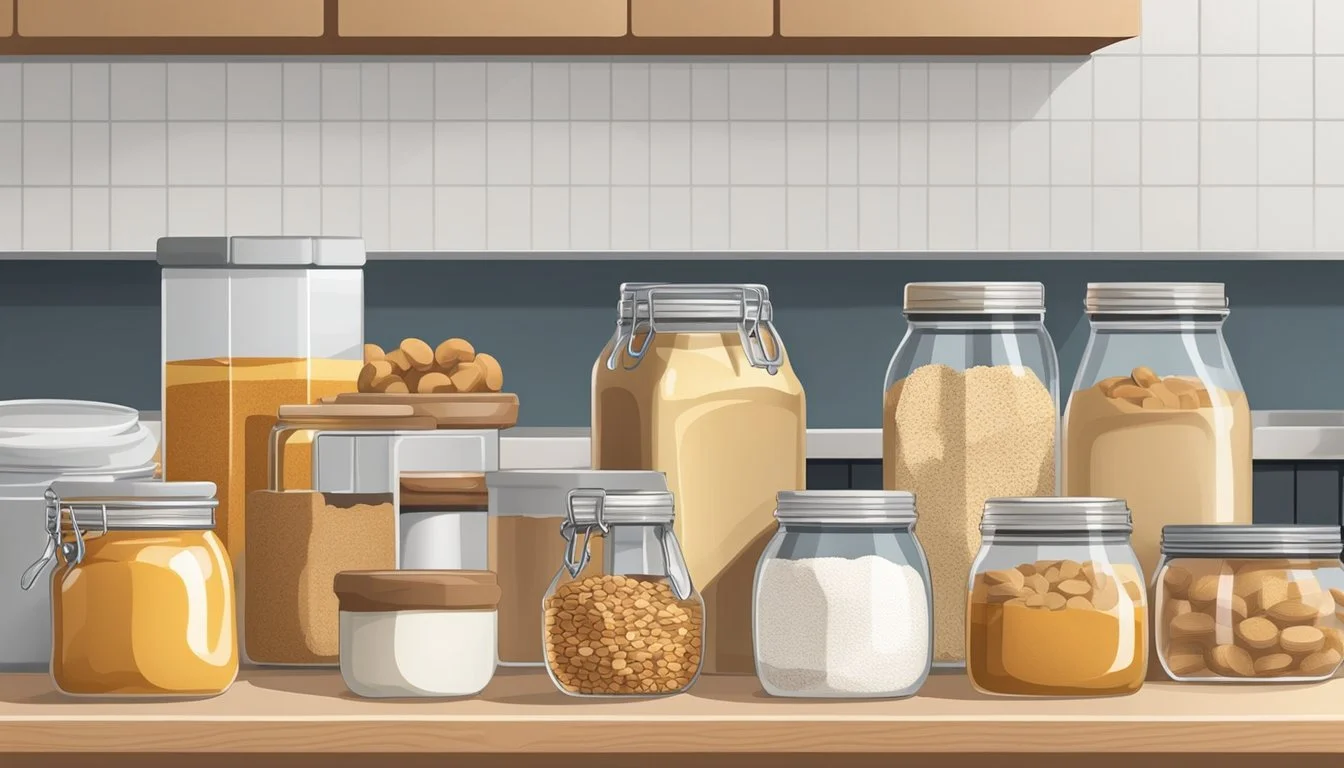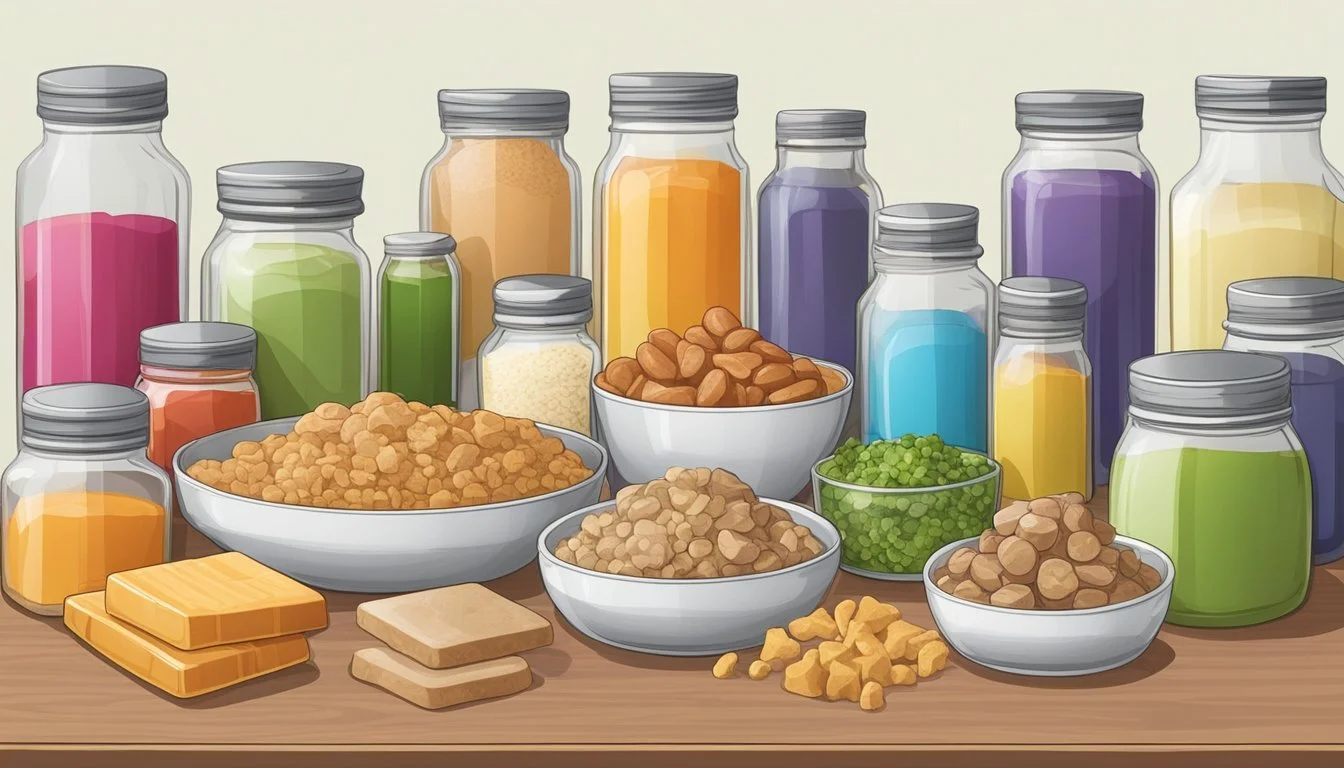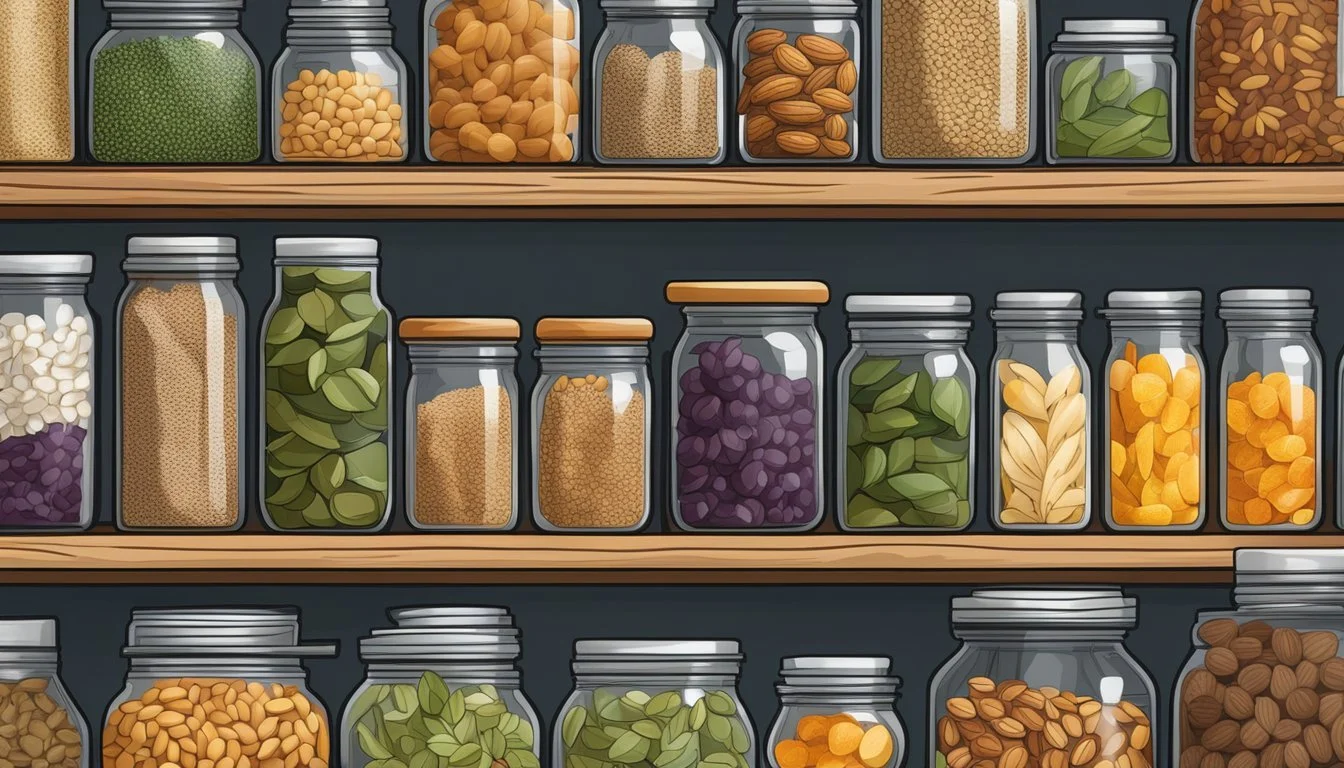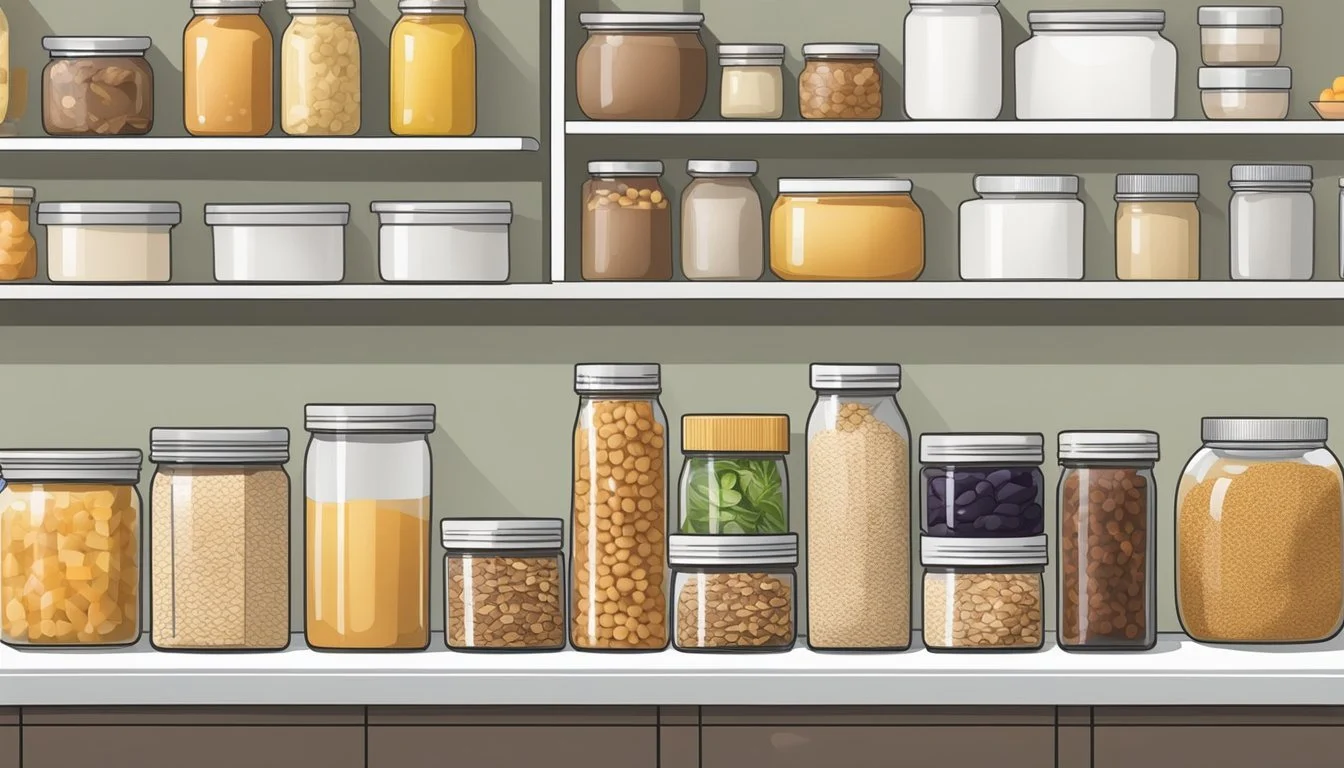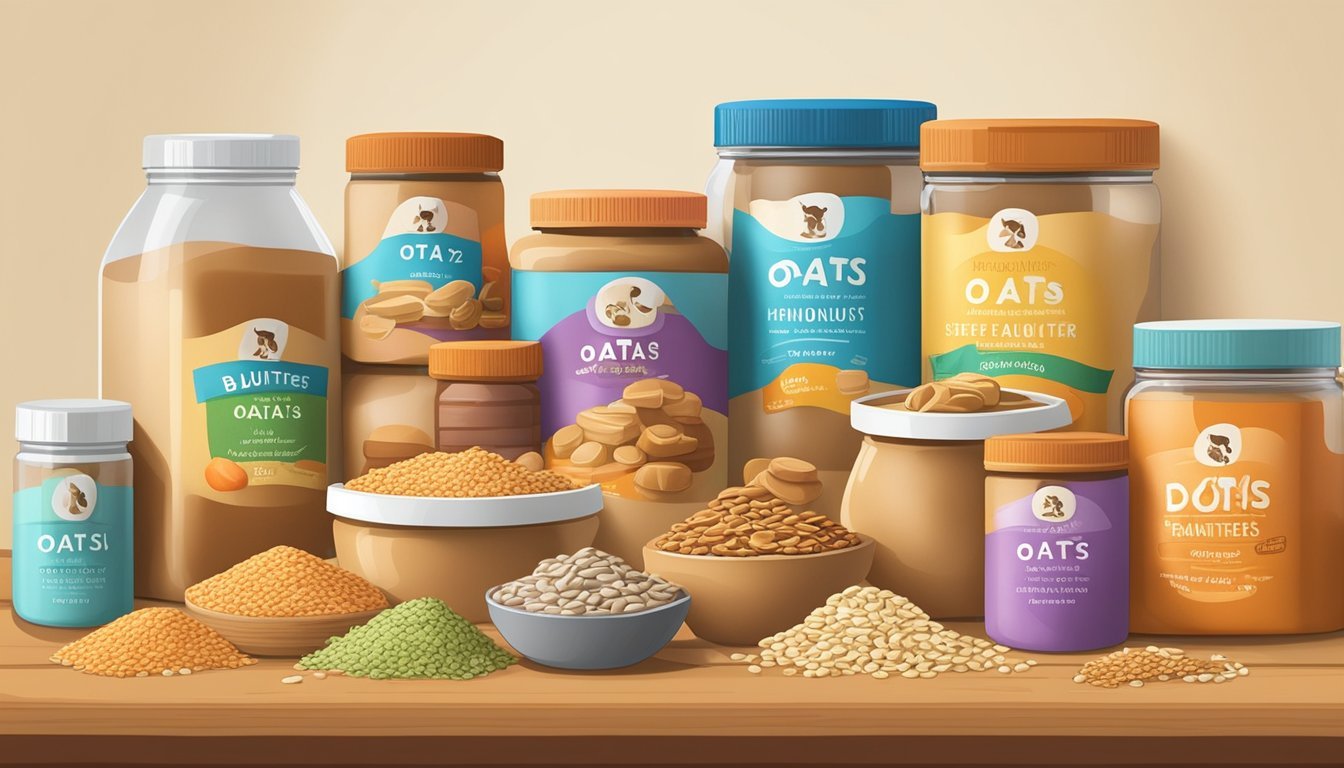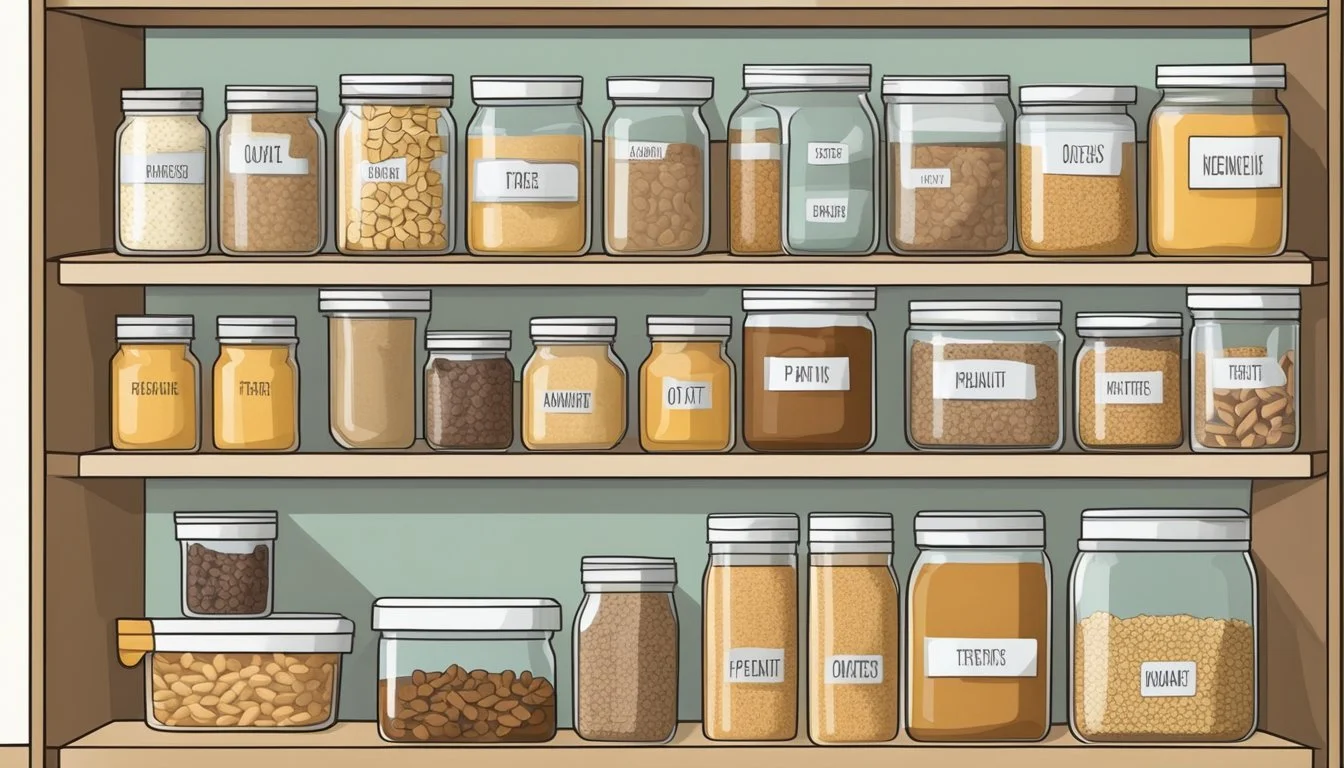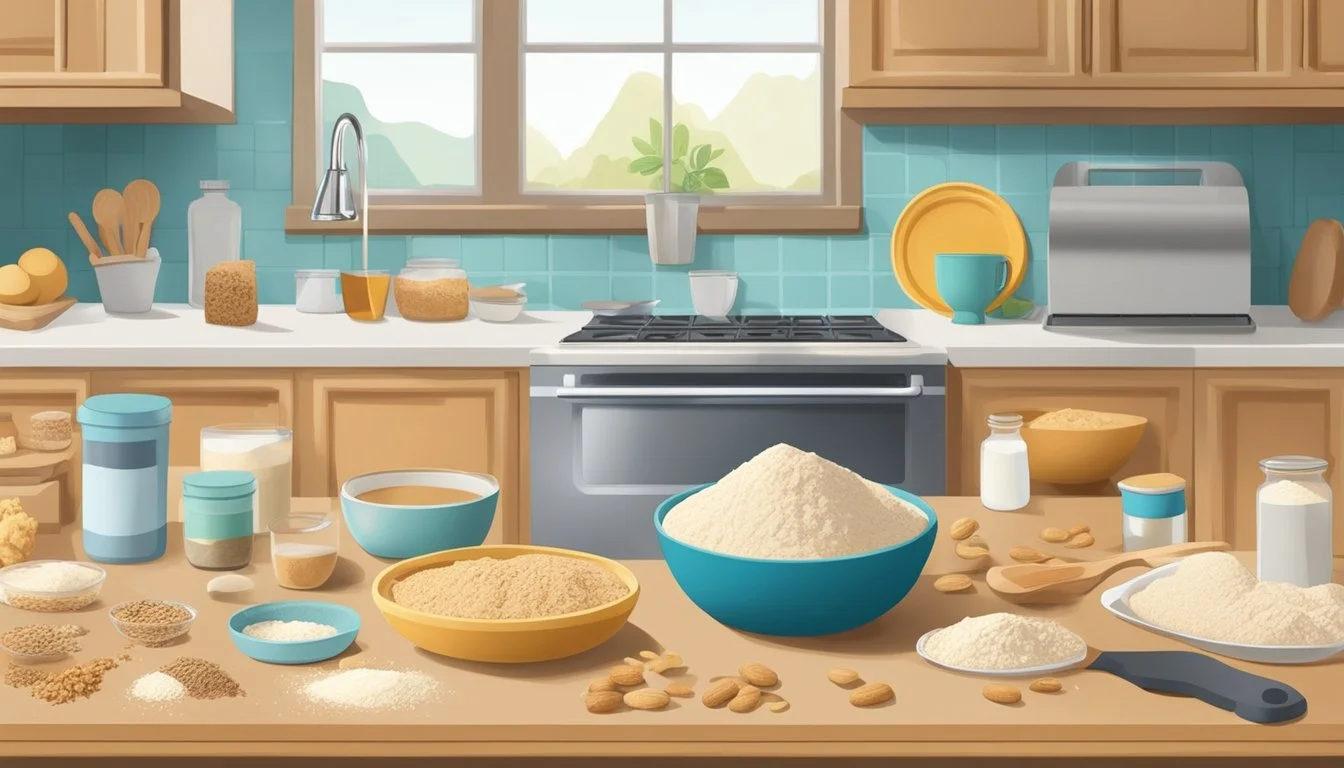Shelf-Stable Ingredients for Homemade Dog Treats
Essential Picks for Healthy Snacks
Creating homemade dog treats is an enjoyable way to reward and pamper pets while ensuring they have healthful snacks made with love. Many pet owners are turning to their own kitchens to control the ingredients that go into their dog's treats, avoiding preservatives and unfamiliar additives found in some store-bought products. Shelf-stable ingredients are key to homemade treats that are not only nutritious but also last longer without refrigeration. This makes them convenient for dog owners to make in bulk and store.
Selecting the correct ingredients when making dog treats at home is crucial for the creation of snacks that maintain freshness over time. Ingredients such as whole wheat flour, oats, and certain nut butters offer the base for many recipes, while pureed pumpkin, unsweetened applesauce, and eggs can enrich treats with flavor and nutrients. These ingredients are known for their long shelf life and their ability to form treats that resist spoilage. Cooking techniques and storage solutions further impact the longevity of homemade canine delicacies.
Moreover, understanding the conditions that affect shelf life, such as humidity, temperature, and light exposure, helps pet owners store their homemade treats effectively. Keeping them in a cool, dry, and dark spot can greatly extend their shelf life, ensuring dogs have access to tasty and safe treats over time. Crafting the perfect treat requires not only a good recipe and the right ingredients but also awareness of proper storage practices to get the most out of homemade creations.
Essential Ingredients for Shelf-Stable Dog Treats
When crafting homemade dog treats, selecting ingredients that contribute to a longer shelf life without refrigeration is crucial. The choice of proteins, fats, and fibers not only ensures nutrition but also affects the treat's stability and storage.
Proteins: Meat and Eggs
Proteins are foundational for dog treats, providing essential amino acids for canine health. Lean meats such as chicken, turkey, or beef should be thoroughly cooked and used in moderation to prevent spoilage. Eggs, a versatile and protein-rich ingredient, can also be included, as they contribute to the treat's structural integrity and have a decent shelf life when cooked within the treats.
Healthy Fats: Coconut Oil and Peanut Butter
Fats are necessary for taste and texture, and some forms can increase a treat's shelf life. Coconut oil is a stable fat that resists rancidity and serves as a healthful addition, providing medium-chain fatty acids which are beneficial for dogs. Natural peanut butter (make sure it's free from xylitol, a toxic artificial sweetener for dogs) is a favorite canine flavor enhancer and offers healthy fats that can help preserve and bind treats.
Fiber Sources: Oats and Sweet Potato
Fiber is integral for a dog's digestive health, and certain sources double as excellent preservatives for treats. Oats are an exceptional grain that provides soluble fiber, contributing to a treat's texture and shelf stability. Sweet potatoes, when adequately dehydrated or cooked into the treats, provide a good source of fiber as well as a natural sweetness dogs enjoy.
It's essential to ensure that treats are stored correctly, in cool, dry, dark places to maximize shelf life.
Selecting Natural Preservatives
When crafting homemade dog treats, it's crucial to use natural preservatives to prolong shelf life without compromising the health benefits. These preservatives ensure that treats stay fresh and safe for consumption over time.
Vitamin C and E as Natural Preservatives
Vitamin C, also known as ascorbic acid, is a potent natural preservative found in many fruits and vegetables. It acts as an antioxidant that prevents spoilage by inhibiting the growth of bacteria and mold. Incorporating vitamin C into homemade dog treats can effectively extend their freshness while also providing health benefits, such as supporting the immune system.
Sources of Vitamin C: To include vitamin C in your dog treats, consider using natural ingredients like pureed fruits or a sprinkle of ascorbic acid powder.
Vitamin E is another powerful antioxidant that serves as a natural preservative. Its main role is to protect the fats in the treats from rancidity, which is critical for maintaining the treat’s flavor and nutritional value over time.
Sources of Vitamin E: Natural sources of vitamin E include vegetable oils, nuts, and seeds. Vitamin E can also be added in the form of mixed tocopherols, which are often used to preserve the freshness of the fats in dog treats.
To utilize these vitamins effectively in homemade dog treats, owners should carefully measure the amounts and thoroughly mix them into the recipe. While they may not preserve treats as long as artificial preservatives, they offer a safer and healthier alternative for extending the shelf life of homemade dog snacks.
Preparing Ingredients for Longer Shelf Life
Maximizing the shelf life of homemade dog treats hinges on moisture control and the use of stable ingredients. Two effective methods are dehydrating proteins and vegetables, and using oat flour as a dry base.
Dehydrating Proteins and Vegetables
By removing water from proteins and vegetables, one significantly extends the shelf life of these ingredients. Dehydration prevents the growth of bacteria and mold, which thrive in moist environments.
Meat Proteins: Slice meats thinly for uniform drying. Opt for lean cuts to reduce fat, which can shorten shelf life due to rancidity.
Vegetables: Chop vegetables into consistent pieces and blanch if necessary to enhance color and shelf life.
Ingredient Preparation Dehydration Temp. Time Chicken Thin Slices 140°F 6-8 hours Beef Thin Slices 140°F 6-8 hours Sweet Potatoes 1/4" Slices 125°F 7-9 hours Carrots 1/4" Slices 125°F 6-8 hours
Creating a Dry Base with Oat Flour
Oat flour serves as an ideal base due to its low moisture content which enhances the shelf life of treats. It's also a healthy alternative to wheat flour and is suitable for dogs with gluten sensitivity.
Making Oat Flour: Process whole oats in a food processor until a fine powder is achieved.
Storing Oat Flour: Keep it in an airtight container, away from moisture and light to maintain freshness.
Storage Solutions for Extended Freshness
Proper storage is essential for maintaining the freshness of homemade dog treats. The right methods can significantly extend their shelf life, protect their quality, and keep them safe for consumption.
Airtight Containers for Pantry Storage
Storing dog treats in airtight containers is key to preserving their freshness by keeping out moisture and pests. A container with a strong seal prevents air exchange, which can lead to spoilage. For extra protection, lining the container with parchment paper can help absorb any excess oil and moisture, further extending the shelf life. Containers should be kept in a cool, dry place away from direct light.
Refrigeration for Soft and Moist Treats
Soft and moist treats can spoil more quickly due to their higher moisture content. Storing these types of treats in the refrigerator is recommended to slow down bacterial growth. To prevent the treats from absorbing odors or losing their texture, they should be tightly sealed in an air-tight container. This also helps to retain moisture without allowing condensation to form, which could make the treats soggy.
Freezing for Longest Viability
For the longest shelf life, freezing homemade dog treats is the best option. Treats can be stored in freezer bags or containers designated for freezer use. To freeze homemade dog treats, it’s advisable to place them in a single layer or separate them with parchment paper to prevent sticking. They can then be thawed as needed, ensuring treats remain fresh for months instead of days or weeks.
Preventing Spoilage and Contamination
Ensuring the long-term freshness of homemade dog treats involves meticulous moisture management, vigilance against fat degradation, and the strategic use of preservatives such as sugar and salt. These measures can significantly hinder the growth of spoilage agents like bacteria and mold.
Moisture Control and Dehydration
Controlling moisture is crucial in preventing the growth of bacteria and mold, which thrive in moist environments. Dehydration of treats through baking can extend their shelf-life substantially. Homemade dog treats should be:
Baked thoroughly: to remove as much moisture as possible.
Stored in airtight containers: to prevent reabsorption of moisture from the air.
Detecting and Preventing Rancidity
Oils and fats in dog treats can become rancid when exposed to air, light, and heat, leading to unpleasant odors and potential health hazards. To prevent rancidity:
Use antioxidants such as vitamin E (often listed as tocopherols) which can protect treats from spoilage.
Store treats in a cool, dark place to minimize exposure to factors that contribute to rancidity.
Understanding the Role of Sugar and Salt
Sugar and salt act as mold inhibitors in food preservation due to their hygroscopic nature, which allows them to draw moisture out of bacteria and mold, preventing their growth. However, the use of sugar and salt should be minimal and within the dietary needs of dogs:
Sugar: Small quantities can act as a preservative, but excess sugar is not recommended for dogs.
Salt: While salt is an effective preservative, it should be used conservatively due to dogs' low tolerance for high-sodium foods.
Healthy Additions and Flavor Variations
In the creation of homemade dog treats, incorporating healthy ingredients that add both flavor and nutritional value is essential. Shelf-stable additions like pumpkin and banana can enhance the taste, while careful ingredient choices can provide a boost of vitamins and minerals.
Natural Sweeteners: Pumpkin and Banana
Using pumpkin and banana in dog treats serves as natural sweeteners and a source of beneficial nutrients. Canned pumpkin, which is often available in a shelf-stable form, is not only palatable but also a good source of fiber, which aids in digestive health. It's important to use pure canned pumpkin without added sugars or spices. Bananas, on the other hand, are rich in potassium and vitamin B6, which are crucial for muscle function and cognitive health.
Vitamins and Minerals Boost
To provide a nutritional boost in homemade dog treats, one should consider ingredients that are rich in vitamins and minerals. Pumpkin is packed with vitamins A, E, and C, as well as iron and potassium, which support a dog's immune system and overall well-being. Bananas not only add sweetness but are also excellent sources of vitamin C, vitamin B6, and potassium. The inclusion of these ingredients supports a balanced diet for dogs, catering to their specific health needs.
Experimenting with Homemade Recipes
One of the joys of making dog treats at home is the ability to experiment with recipes and find what suits a dog's palate and dietary requirements. When experimenting, it is critical to prioritize healthy ingredients and to avoid those that dogs should not consume, such as chocolate, grapes, or xylitol, an artificial sweetener. Stick with vet-approved and dog-safe options to ensure the treats contribute to their health and happiness.
Tools for Homemade Dog Treat Making
In the pursuit of creating nutritious and delicious homemade dog treats, one needs to equip their kitchen with specific tools that ensure efficiency and quality in the treat-making process.
Food Processors and Blenders
A food processor is essential for combining various ingredients into a cohesive dough. It can handle large quantities of ingredients including tough vegetables or meats that need to be finely chopped or pureed. Moreover, it is particularly useful for mixing dough to the desired consistency. A blender, on the other hand, is ideal for creating smooth purees which can be incorporated into the dog treat mixture. Pureed fruits or vegetables contribute to the flavor and nutritional profile of the treats.
Baking Sheets and Parchment Paper
To bake the dog treats evenly, one should use a baking sheet. It provides a flat, sturdy surface for spreading out the treats before baking, ensuring they cook uniformly. Pairing the baking sheet with parchment paper not only prevents sticking but also simplifies cleanup. The non-stick surface of parchment paper means that treats can be removed effortlessly without leaving any residue, maintaining the shape and integrity of the baked treats.
Comparison with Commercial Dog Treats
In evaluating homemade versus commercial dog treats, one can discern notable differences in nutritional content and cost-related factors. Pet owners can often tailor homemade treats to align with their dog's specific nutritional needs—a flexibility not always available with off-the-shelf products.
Nutritional Differences
Commercial dog treats often contain preservatives, artificial colors, and flavors, which some dogs might be sensitive or allergic to. Homemade dog treats, on the other hand, allow for complete control over the ingredients, ensuring that treats contain whole, nutritious components, and exclude unnecessary additives. The inclusion of high-quality proteins, grains, and vegetables contributes to a more natural diet for the canine.
Cost-Effectiveness and Quality
When considering cost-effectiveness, homemade dog treats typically win out. Commercial dog treats may seem convenient but often come at a higher price, especially if one opts for premium or specialized options. In contrast, homemade treats can be made in bulk and stored, reducing the overall cost. Moreover, the quality of homemade treats is directly linked to the ingredients chosen by the pet owner, allowing for a higher-grade product without the premium price tag.
Serving and Safety Tips
Homemade dog treats provide a way to control the quality of ingredients in a pet's diet. It is crucial to ensure that these treats are served safely and contribute to the nutritional well-being of the dog.
Proper Portion Sizes and Caloric Intake
When feeding a dog homemade treats, it is important to consider their caloric intake and portion sizes. Each treat should be factored into the dog’s daily caloric needs to maintain a healthy weight. Dogs vary in size, activity level, and metabolism, so the ideal number of treats will differ from one dog to another.
Small dogs: typically require between 3-5 small treats per day.
Large dogs: may have up to 10, assuming these treats are small.
The following is a general guideline to monitor caloric intake from treats:
Dog Size Treat Size Approximate Calories per Treat Daily Treat Limit Small Small 5-10 3-5 Medium Medium 15-20 2-4 Large Large 20-25 1-3
It's advisable to replace a portion of the main meal with treats to prevent overfeeding. Homemade treats should complement, not replace, a balanced diet.
Identifying Allergic Reactions and Intolerances
Dogs can suffer from allergies or intolerances to certain ingredients commonly found in treats, such as wheat or dairy. Signs of an allergic reaction may include itching, digestive upset, or respiratory issues. Identifying these signs early is key to a pet's health.
Owners should observe their dogs after introducing new treats and note any changes in:
Skin condition
Digestive regularity
Overall behavior
In cases of severe reactions such as persistent scratching, swelling, or difficulty breathing, it is imperative to consult a veterinarian. To preserve freshness and reduce the risk of foodborne illnesses, dog treats should be stored in airtight containers and kept in cool, dry conditions. Carbohydrates in treats, like those from flour or grains, should be monitored as they contribute significantly to the treat's overall calorie count.
Specialty Dog Treat Recipes
In the realm of homemade dog treats, incorporating shelf-stable ingredients ensures treats remain fresh longer without the need for refrigeration. This section explores specialty recipes that cater to various canine dietary needs and preferences.
Peanut Butter Pumpkin Treats
Peanut butter pumpkin treats are a wholesome choice for dogs, combining the satisfying taste of peanut butter with the nutritional benefits of pumpkin. To make these treats, one needs to mix flour, eggs, pureed pumpkin, and peanut butter to form a dough. The dough should be rolled out, cut into desired shapes, and baked until crisp.
Ingredients:
Flour
Eggs
Pumpkin puree
Peanut butter
Soft Treats with Added Supplements
For dogs that prefer a softer texture or require additional nutrition, soft treats with added supplements are ideal. One can incorporate ingredients like fish oil or glucosamine into the batter, which may benefit a dog's joint health and coat. These treats often include cinnamon for flavor, which is safe for dogs in small amounts.
Supplement Suggestions:
Fish oil
Glucosamine
Flavor Additions:
A pinch of cinnamon
Grain-Free and Dairy-Free Options
Respecting dietary sensitivities is essential when crafting dog treats. Grain-free and dairy-free options are perfect for dogs with allergies or intolerances. Almond flour or coconut flour can replace traditional grains, while non-dairy substitutes like unsweetened applesauce add moisture without the lactose found in dairy products.
Grain-Free Flour Alternatives:
Almond flour
Dairy-Free Moisture Sources:
Unsweetened applesauce

